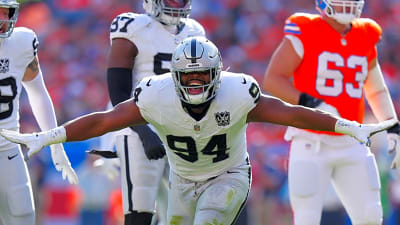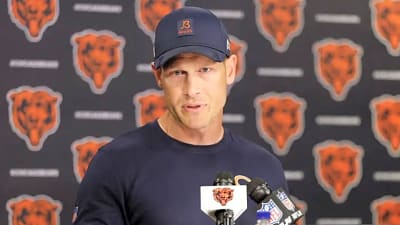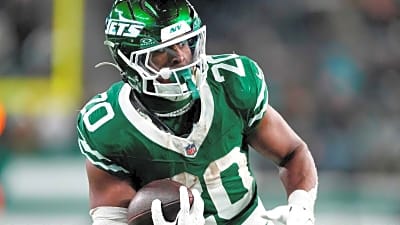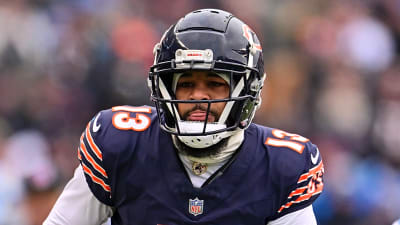Dave Feit is counting down the days until the start of the 2025 season by naming the best Husker to wear each uniform number, as well as one of his personal favorites at that number. For more information about the series, click here. To see more entries, click here.
Greatest Husker to wear 38: Sam Francis, Fullback, 1934-1936
Honorable Mention: Dan Alexander, Steve Forch, Vike Francis, Bruce Pickens, Barrett Ruud
Also worn by: Brody Belt, Timmy Bleekrode, Ken Dostal, Vincent Hawkins, Damian Jackson, Harrison Jordan, Lee Kunz, Graham Stoddard, Kris Van Norman
Dave's Fave: Barrett Ruud, Linebacker, 2001-2004
Who is the greatest player in Nebraska football history?
Before you answer, allow me to throw a qualifier on there: You can only pick players whose careers ended before Bob Devaney's first game in 1962.
At that point, who would have been considered the greatest player in Nebraska football history?
To simplify and shrink the pool of candidates, let's only look at players who have been inducted into the College Football Hall of Fame. Notably, that eliminates Tom "Train Wreck" Novak. But don't worry - the remaining seven names all have a legitimate claim to the "best ever" crown.
The super seven, in alphabetical order: Forrest Behm, Guy Chamberlin, Sam Francis, Bobby Reynolds, George Sauer, Clarence Swanson and Ed Weir. Spoiler alert: Six of them will be honored as the greatest at their respective numbers.*
*The seventh, Guy Chamberlin, played before uniform numbers were commonplace. But make no mistake, the pride of beautiful Blue Springs, Neb., is a worthy contender. A transfer from Nebraska Wesleyan, "Champ" Chamberlin was all-conference in each of his two seasons at Nebraska and an All-American in 1915. Nebraska went a combined 15-0-1 in his two seasons, including a win over Notre Dame. Against Iowa, Chamberlin scored four touchdowns.
Chamberlin is one of three Cornhuskers (along with Bob Brown and Will Shields) to be inducted into the College and Pro Football Halls of Fame.
In 1936, the members of Sigma Delta Chi, a professional journalism fraternity, sought to name the 11 best players in school history. To that end, they sent 300 postcards to every living Cornhusker, Bugeater and Old Gold Knight alumnus asking them to select an all-time Nebraska football team. From the responses, they formed a team and created a special section in the Daily Nebraskan. Additionally, the player named on the most responses was deemed the greatest player in Nebraska history: Guy Chamberlin.
Sam Francis received enough votes to make the second team.
On one hand, I love that this all-time team exists, and I respect their methodology. Who better to ask than former players?
But I have to put an asterisk on their results.
The exercise was conducted in the summer of 1936, with the results tabulated and released in November, before the end of the 1936 season. Sam Francis was a senior in 1936 and had a monster senior season.*
*Seriously - Sam's senior season is in the running for the best ever by any Nebraska student-athlete. It is that good.
To put my argument into modern terms, it would be like conducting a poll to name the greatest Blackshirt ever, but ending the voting in early October of Ndamukong Suh's senior season. Okay… maybe that's not a fair comparison. Suh didn't do as well in the Heisman voting as Sam Francis did.
Before we quibble too much with the results a 90-year-old poll, let's pause and consider some of Sam Francis's athletic gifts. Born in Dunbar, Neb., but raised in Oberlin, Kan., Francis was wildly successful at everything he tried. His high school football, basketball and track teams each won three state titles during his prep career.
Legendary Kansas basketball coach Phog Allen badly wanted Francis as a Jayhawk. Francis moved to Lawrence a few weeks before the semester started. But it just didn't feel right. Francis moved to Lincoln and enrolled at Nebraska. Phog Allen said Sam Francis was the one who got away.
As great as Francis was on the basketball court or the football field, track was arguably his best sport.
Francis was a track and field All-American at Nebraska - one of four Huskers ever to be a first-team All-American in football and track. He won shot put titles at the Drake Relays, Big Six championships (indoor and outdoor), as well as an NCAA championship in 1937. Francis qualified for the 1936 Summer Olympics (held in Berlin) and finished fourth. Germany's Gerhard Stock bumped Francis off the podium with this final throw. Francis missed out on a medal by 0.21 meters - about 8.25 inches.
After returning back to the States, Francis started his senior season on the football team. In the opener against Iowa State, he returned a kickoff 97 yards for a touchdown. He had another long kickoff return against Kansas that was called back by penalty. Francis ran, punted and kicked for the first AP Top 10 team in school history (the poll started in 1936, and the Huskers finished ranked ninth). He was named All-Big Six for the second straight year.
Here's how the Cornhusker yearbook summed up his senior season: "Francis reaped more glory as the Husker's plunging, punting, and passing fullback. Francis stood out in every grid battle and as a reward for his superior ability, he was honored by America's sports writers by being named on all All-America honorary football elevens."
Sam Francis finished second in the 1936 Heisman Trophy voting to Larry Kelley of Yale. Francis was the first overall pick of the 1937 NFL draft by Philadelphia, but his pro career was cut short by World War II. He was elected to the College Football Hall of Fame in 1977.
Norman Ott was one of the earliest Cornhusker historians. He was described in a 1936 Daily Nebraskan article as someone who has "followed the course of Husker football teams for almost 20 years. He knows all of Nebraska's great football players since the inception of the forward pass." Here is what Ott had to say about Sam Francis: "Sam can do everything George (Sauer) could do, and many football addicts in the Nebraska camp feel that he is a smoother ball handler than George."
Was he better than Chamberlin - and therefore the greatest Nebraska player prior to the Devaney/Osborne era?
Having researched and written about all of them, I'd be very tempted to pick Sam Francis over Chamberlin.
Francis definitely has an argument for the greatest senior year of any Nebraska student-athlete:
- Fourth-place finish at the 1936 Olympics.
- Consensus All-American in football and track.
- Led the football team to its first Top 10 finish.
- Heisman Trophy runner-up.
- No. 1 overall pick in the NFL draft.
- Won indoor and outdoor conference titles in track.
- Led the track team to an eighth-place finish at the NCAA outdoor championships
- Won the NCAA shot put championship.
Very, very few Huskers - regardless of sport - can match or top that.
***
Who is the first family of Nebraska football? The clan who has had the biggest impact on the program, over the longest stretch?
The Fischer family has a very strong case. Four brothers (Ken, Cletus, Rex and Pat) played for Nebraska between the end of World War II and Bob Devaney's arrival. Three of Clete's sons (Pat, Dan and Tim) also played for the Huskers, as did their cousins Jerry and John. Additionally, Clete was an assistant coach at Nebraska for 26 years.* That's over 35 years and six coaching staffs. That is an incredibly impressive run.
*Since 1991, the Cletus Fischer Native Son Award has been presented to a senior who "best exemplifies the following qualities: good work ethic; competitiveness; leadership; forthrightness; sense of humor; pride; loyalty and love of Nebraska."
The family tree Barrett Ruud belongs to cannot match the longevity of the Fischers, but it has deeper roots and more branches.
It all goes back to Clarence Swanson, Ruud's great-grandfather, who starred for Nebraska between 1918 and 1921. Two of his granddaughters married Huskers on the Devaney/Osborne teams (Bob Martin* and Tom Ruud). You likely remember Tom's brother John from his devasting tackle on a kickoff return in the 1978 win over Oklahoma.
*Martin's son Jay played on the Bill Callahan and Bo Pelini teams. Mike Ekeler, an assistant coach on the Pelini and Matt Rhule staffs, is Bob Martin's nephew.
Tom Ruud and his wife had two boys: Barrett and Bo, who played for Frank Solich and Callahan. Barrett was also an assistant coach under Scott Frost.
Phew.
All told, the Swanson/Ruud/Martin tree spans 28 seasons and 10 coaching staffs. Other than Mike Riley's three seasons, there has been a member of this family associated with every Nebraska coaching staff since Bob Devaney was hired.*
*Stay tuned, because Swanson played a big role in Devaney's hiring.
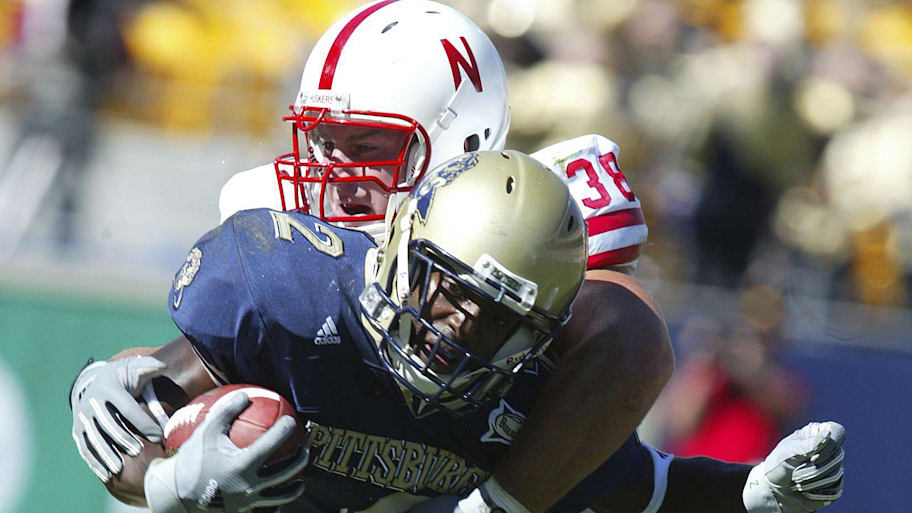
With so many ties to the program, it made sense that Barrett (and brother Bo) would grow up to be Huskers. As Barrett told Leo Adam Biga in an article for Hail Varsity magazine, their advantages were more than just excellent genetics:
"It was never like a pipe dream to be successful at football,” Barrett said. "We saw a lot guys up close and personal live that out, so we knew it was attainable. The one thing our dad would point out to us is it takes a lot of work to get there and that the guys that work the hardest tend to have the most success. We weren’t pushed into any sports, but once we decided that’s what we wanted to do we had a lot of resources as far as what it took to be successful. A lot of kids have no idea when they first start playing sports. The more serious we got, we could ask questions about what did it take to reach the next level."
Like his great-grandpa, Barrett Ruud was an outstanding player. Ruud is Nebraska’s all-time leader in tackles, third in career tackles for loss, and is easily on the Mount Rushmore of greatest linebackers in school history.*
*My Mount Rushmore of Husker linebackers would be (chronologically): Jerry Murtaugh, Ed Stewart, Barrett Ruud and Lavonte David.
Ruud broke Murtaugh's 30-year-old mark for career tackles early in his senior season. Ruud would finish his career with 432 total tackles, 90 tackles ahead of Murtaugh.
How far ahead of the pack is Barrett Ruud? If we used only his 218 solo stops, he would still rank 30th on the all-time tackle charts (two ahead of brother Bo and 16 ahead of his dad). It is a shame that Nebraska's career tackles list starts at 170 total tackles (where uncle Bob Martin currently sits in 60th place), because I'd love to know where Barrett's 2003 season total of 149 stops would rank. That was a record until Lavonte David beat him by three tackles in 2010.
A three-year starter, Ruud was a force all over the field. He had a nose for the football on running plays, but also excelled in pass coverage, recording 12 breakups and two interceptions in his career. Strangely, he earned first team All-Big 12 honors only as a senior. But he was a three-time academic All-Big 12 performer.
Between Nebraska and his lengthy NFL career, Ruud made over 1,000 tackles in his football career. I'm guessing the majority of them were serenaded by a loud chorus of "RUUUUUUUD!!!" from the fans in the stands.
More must-reads:
- Five Big 12 games that will shape the CFP
- Kelsey Plum takes shot at Caitlin Clark after WNBA All-Star Game
- The 'NBA yearly field goals-per-game leader' quiz
Breaking News
Trending News
Customize Your Newsletter
 +
+
Get the latest news and rumors, customized to your favorite sports and teams. Emailed daily. Always free!
